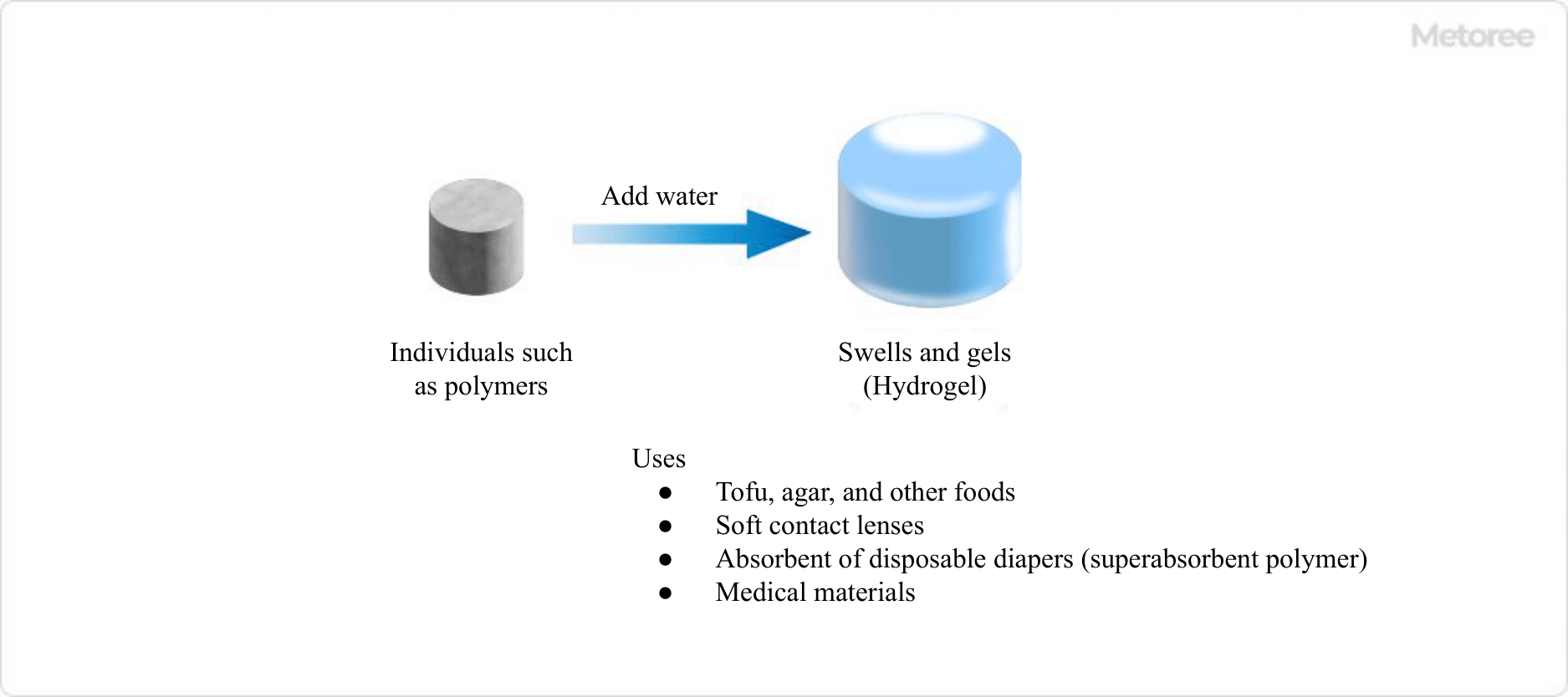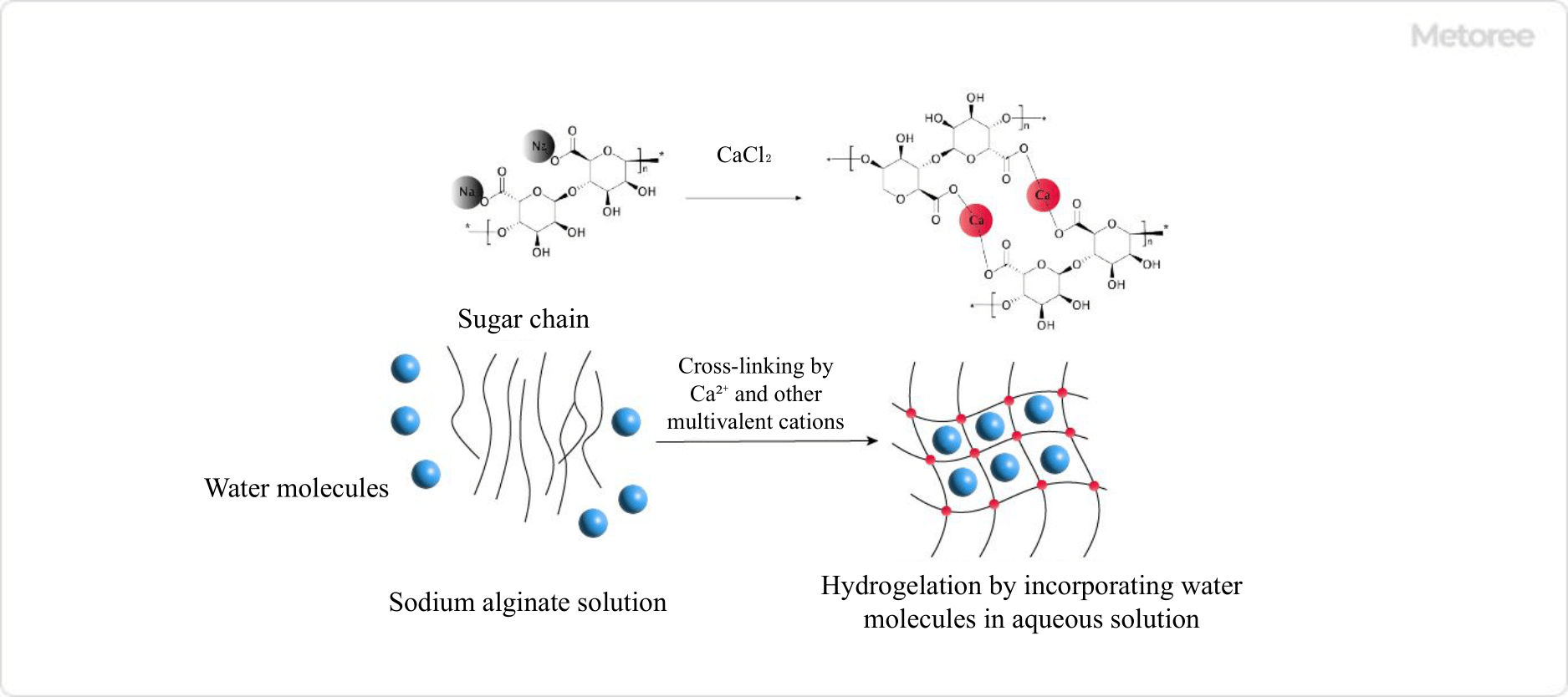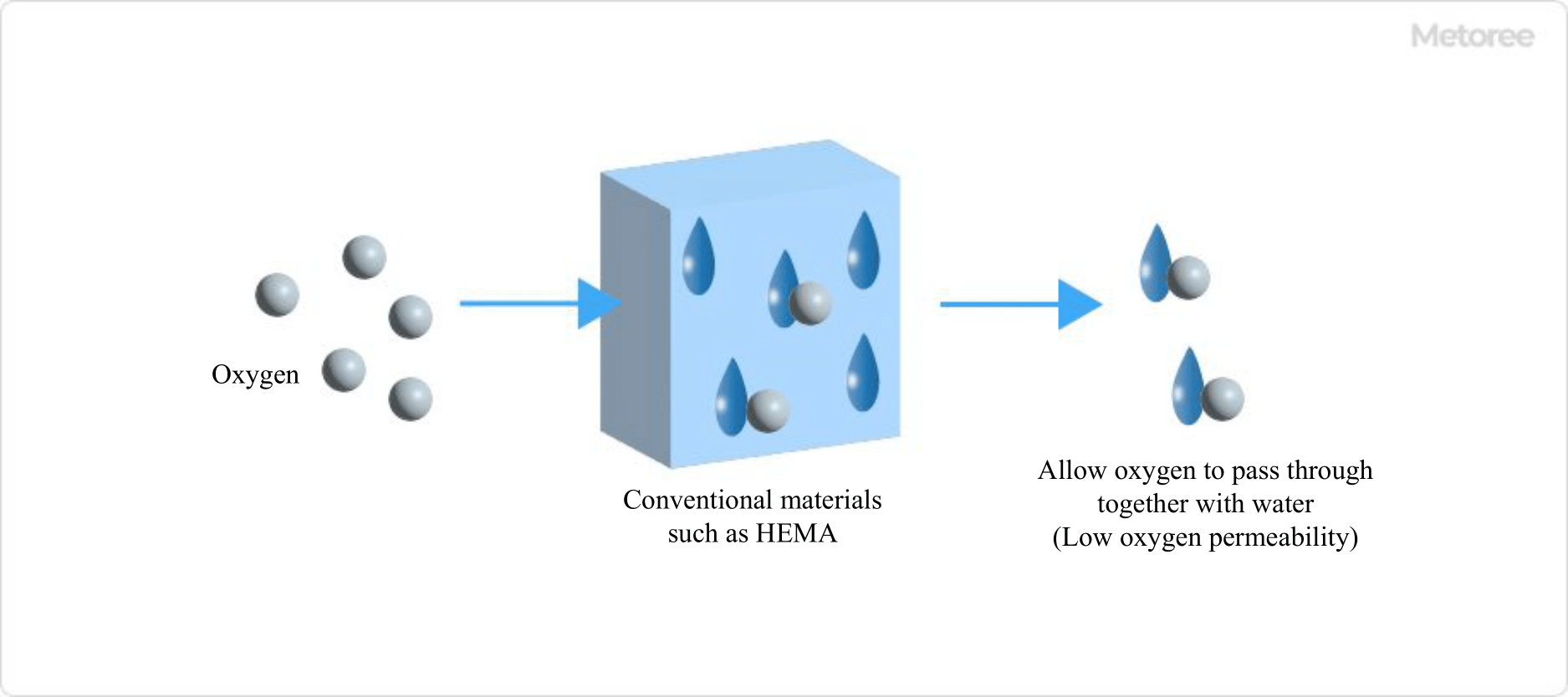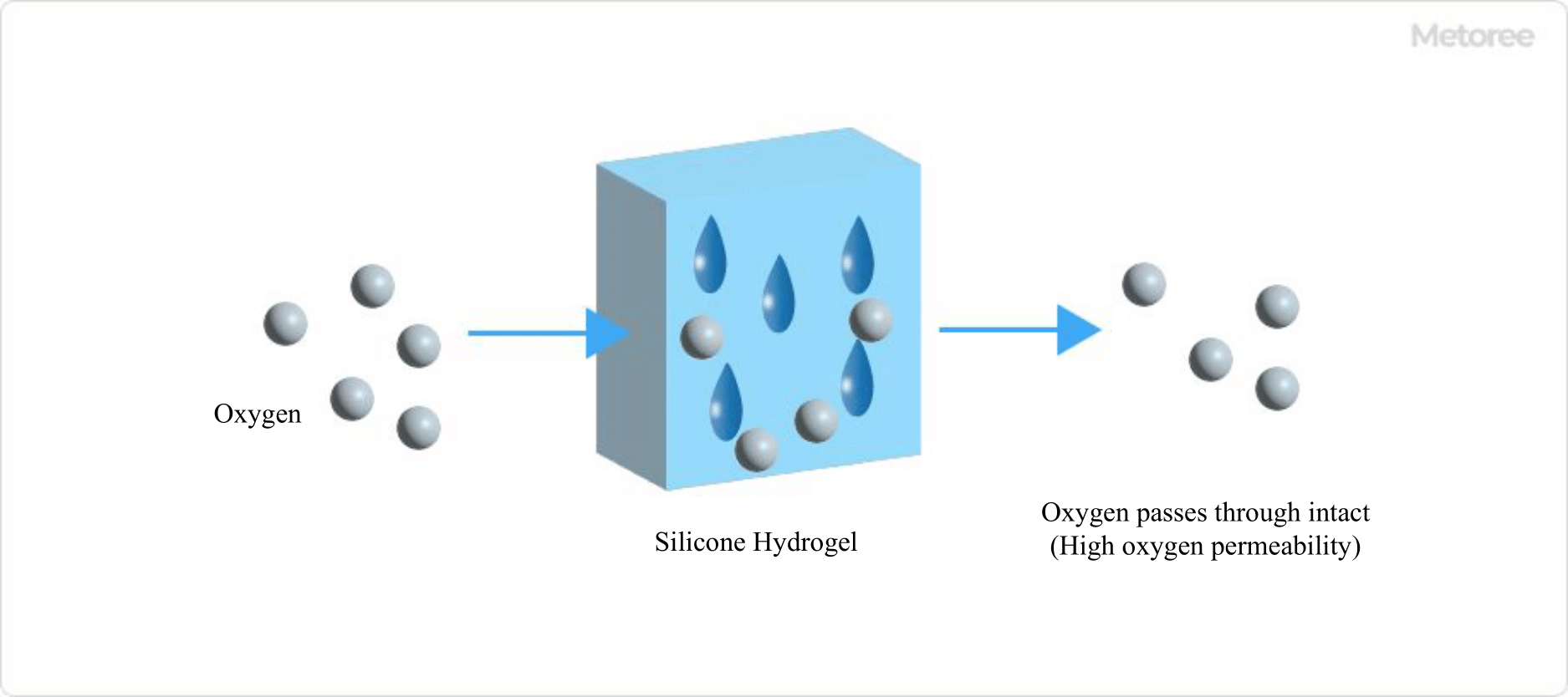All Categories
History












This section provides an overview for hydrogel as well as their applications and principles. Also, please take a look at the list of 12 hydrogel manufacturers and their company rankings. Here are the top-ranked hydrogel companies as of July, 2025: 1.Akina Inc., 2.R & D Medical Products Inc., 3.NEXGEL.
Table of Contents
Hydrogel is a general term for a solid such as a polymer that absorbs water and swells to form a non-flowable gel.
For example, when polymer chains such as polysaccharides and gelatin are cross-linked to form a three-dimensional network structure, the network structure contains a large amount of water and becomes a swollen body that cannot be dissolved in water. Examples include konjac, agar, and jelly.

Figure 1. Image of hydrogel
Hydrogel is found in foods such as tofu and agar, and is also used in soft contact lenses and diaper absorbents (superabsorbent polymers). Because its composition is similar to that of biological soft tissue, its use as a medical material has been explored in recent years, but the loss of properties due to absorption of water in the body remains an issue to be resolved.
Examples include the use as artificial cartilage and artificial intervertebral discs, as a material that releases drugs slowly, and as a scaffold material for cells in the field of regenerative medicine.
After culturing cells on Hydrogel, only the gel is dissolved by a reducing agent to create cell sheets with cells attached to each other, which can then be applied to damaged areas for treatment.
Hydrogel is classified into physical gel and chemical gel according to the cross-linking method.
As specific examples, items such as agar and gelatin, which undergo a reversible sol-gel transition when heated, are physical gels, while chemically stable items such as superabsorbent polymers used in disposable diapers and soft contact lenses are chemical gels.

Figure 2. Example of gelation of sodium alginate
One well-known example is alginic acid, a natural polymer. The sodium salt of alginate is water soluble, but when a multivalent cation such as Ca2+ is added, ionic cross-linking occurs instantly. In this process, the solvent water is incorporated into the mesh structure of the cross-links, resulting in gelation (Hydrogel).

Figure 3. Conventional materials such as HEMA
HEMA (Hema: hydroxyethyl methacrylate) has been used in conventional soft contact lenses because it becomes soft when water is included. Since increasing the water content increases oxygen permeability, attempts have been made to increase the water content and to reduce the thickness of the lens. However, since a high water content rate causes water to evaporate more easily, the eyes tend to dry out during wear, and technological development has been considered to be limited.

Figure 4. The case of silicone hydrogel
Therefore, silicone hydrogel has been attracting attention in recent years as a new material that solves the HEMA issue. Silicone hydrogel is a material that exhibits high oxygen permeability despite its low water content. Since oxygen passes directly through the contact lens, it can deliver a large amount of oxygen without depending on the amount of water in the lens, which has the advantage of reducing the burden on the eyes.
It is expected to reduce the decrease in corneal endothelial cells in the cornea, which has been a problem with contact lenses in the past. Another advantage is that the low water content prevents the eyes from drying out while wearing the lenses. Furthermore, silicone hydrogel material is less likely to be contaminated by proteins contained in tears.
However, because it is highly lipophilic, once oil gets on it, it is difficult to remove. Therefore, care must be taken to prevent oil from adhering to eye makeup. The challenge is that it is a harder material than HEMA due to its low water content, and technological development is underway to improve its wearing comfort.
*Including some distributors, etc.
Sort by Features
Sort by Area

Momentive Performance Materials Inc. (MPM) is an American manufacturer of silicones and specialty solutions established as a subsidiary of MOM Holding Company in 2019. Based in Niskayuna, New York, the company produces various silicones and silicone derivative products such as adhesives, cosmetic additives, hardcoats, and mold release agents. These are used by clients in a wide range of industries, including the automotive, renewable energy, packaging, and beauty industries. MPM operates globally, with over 50 manufacturing and commercial locations across North and South America, Europe, Africa, and Asia.

R & D Medical Products Inc., founded in 1997 and headquartered in Lake Forest, California, is a manufacturer of medical devices and supplies. The company is engaged in producing healthcare solutions that cater to diverse medical needs. Its product line includes hydrogels, electrodes, and patient care essentials, utilized by medical professionals worldwide. The company has earned ISO 9001 certification, highlighting its adherence to rigorous quality standards. It also offers designs and builds of custom production lines to meet specific client production needs.

C.G. Laboratories, founded in 1998 and headquartered in Granbury, Texas, United States, is a pioneering manufacturer of medical equipment and solutions. Specializing in medical devices, laboratory equipment, decontamination equipment, and contract packaging, the company offers a diverse range of services including environmental monitoring, and consulting. It also provides a wide variety of turn-key contract packaging services to fit its clients’ packaging needs. The company caters to global scientific communities, ensuring seamless access to advanced technology.

NEXGEL, located in Langhorne, Pennsylvania, has been a developer and manufacturer of electron-beam cross-linked hydrogels for cosmetic and commercial applications. The company is FDA registered and ISO certified to create long lasting hydrogel innovations with product lines including ultra-hydrating face mask, blister shields, hexagel, crack heel repair, fever patch, and anti-chaffing circles, all of which are used to protect and comfort delicate skin. The products come in different brands such as medagel, clearcomfort, turfguard, and are designed to be applied in footcare, sports, and everyday life.

Katecho is an ISO 13485 certified company that was established in 1984 and located in Des moines, Lowa. The company specializes in manufacturing medical and cosmetic products and as well offers product design, printing, hydrogel production, logistics, and manufacturing services. The state-of-art manufacturing facility is equipped with automated computer-controlled manufacturing system which facilitates their production lines to meet their customer needs. The company is also a pharmaceutical manufacturer and offers pharmaceutical-based devices and has other certifications from the Japanese Ministry of Health and Labor Force and the Korean Ministry of Food and Drug safety.

Cardinal Health, established in 1971 and headquartered in Dublin, Ohio, USA, is a global manufacturer and distributor of pharmaceuticals, medical, and lab products. Operating in 30+ countries with 46,500 employees, Cardinal is also a provider of data solutions for healthcare facilities. The company serves nearly 90% of U.S. hospitals, over 60,000 pharmacies, and 10,000+ specialty offices. Cardinal is recognized by awards in diverse accolades, including LGBTQ Workplace Equality, Top Companies for Executive Women, Noteworthy Company for Diversity, Top Hospitals and Health Systems, Top Companies for People with Disabilities, among others.

Akina Inc., a company founded in 2001 and located in West Lafayette, Indiana, is a supplier and distributor of research products and services. The company specializes in producing various research products and services with controlled release, medicinal delivery, and biomedical applications. Its product portfolio includes biodegradable polymers, chemical intermediates, custom synthesis, block-copolymers, and fluorescent dyes. It consists of two divisions, PolySciTech is the products division and Akinalytics is the laboratory services division.

Axelgaard, founded in 1985 and headquartered in Fallbrook, California, is a manufacturer specializing in medical electrodes and related products. The company has established itself as a key player in the medical device industry. It offers products including neurostimulation and electrophysiology electrodes, catering to diverse medical needs. As a supplier, it ensure products that find application in pain management, physical therapy, and more. The company is an ISO 13485, CE, and MDSAP-certified business with operations in the United States and Europe.

Contamac, a company founded in 1987 and headquartered in Saffron Walden, England is a manufacturer, supplier, and distributor of contact and intraocular lens materials. The company specializes in the development of polymers and biocompatible materials for medical applications. It features ISO7 cleanroom manufacturing, research, and laboratory facilities. The company also produces bespoke ocular formulations to clients’ specifications and collaborates with the wider scientific community to create new biocompatible materials and applications. The company is ISO 9001 and ISO 13485 accredited, and two-time recipients of The Queen’s Award for Enterprise.

CD Bioparticles, founded in Shirley, New York, is a manufacturer of biocompatible drug delivery systems. The company's product portfolio includes Liposomes, PEGylated liposomes, Polymer microspheres, Nanoparticles and Functional Biomedical Coatings. Their products are used in industries such as Food and Beverage, Pharmaceutical and Biotechnology, Chemical and Petrochemical, Environmental Testing and healthcare. They also provide Contract services of drug delivery formulation developments, Product Selection Guidance, customer support, custom research projects and customized services.

ChitoLytic, Inc., founded in 2011 and headquartered in Toronto, Canada, is a manufacturer, distributor, and supplier of chitosan-based products and solutions. The company offers a range of chitosan products, including medical grades that are used in biomedical applications like wound dressings, tissue engineering, and drug delivery systems, food grades for food packaging, preservation, and as a natural thickener, agricultural grades for plant growth promotion, crop protection, and soil conditioning, and industrial grades, utilized for water treatment . Chitosan is FDA compliant and GMP compliant, ensuring their products provide environmentally friendly and sustainable solutions for a variety of industrial applications.

The Tape Lab Inc. is headquartered in Dana Point, CA, and the company manufactures customized adhesive products like Industrial adhesives, stick-to-skin cosmetics adhesives, and medical adhesives. The portfolio of the company consists of adhesive transfer tapes, single-coated tapes, adhesive bars, wearable device tapes, diagnostic tapes, etc. The wearable device tapes are tapes that can hold the device securely for short- and long-term wear. Also, diagnostic tapes are used in diagnostic medical devices like test strips and lab-on-a-chip.
Ranking as of July 2025
Derivation Method| Rank | Company | Click Share |
|---|---|---|
| 1 | Akina Inc. |
14.2%
|
| 2 | R & D Medical Products Inc. |
13.6%
|
| 3 | NEXGEL |
11.3%
|
| 4 | C.G. Laboratories |
9.4%
|
| 5 | Contamac |
8.1%
|
| 6 | Chitolytic, Inc. |
7.7%
|
| 7 | Momentive Performance Materials Inc. |
6.9%
|
| 8 | CD Bioparticles |
6.7%
|
| 9 | The Tape Lab Inc |
6.2%
|
| 10 | Katecho |
5.9%
|
Derivation Method
The ranking is calculated based on the click share within the hydrogel page as of July 2025. Click share is defined as the total number of clicks for all companies during the period divided by the number of clicks for each company.Number of Employees
Newly Established Company
Company with a History
*Including some distributors, etc.
*Including some distributors, etc.
| Country | Number of Companies | Share (%) |
|---|---|---|
 United States of America
United States of America
|
7 | 87.5% |
 United Kingdom
United Kingdom
|
1 | 12.5% |